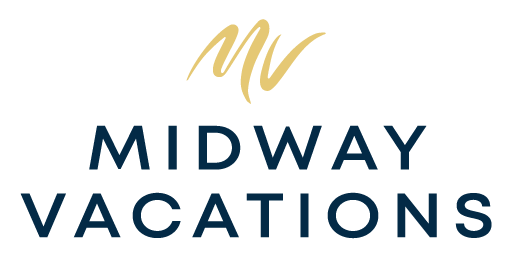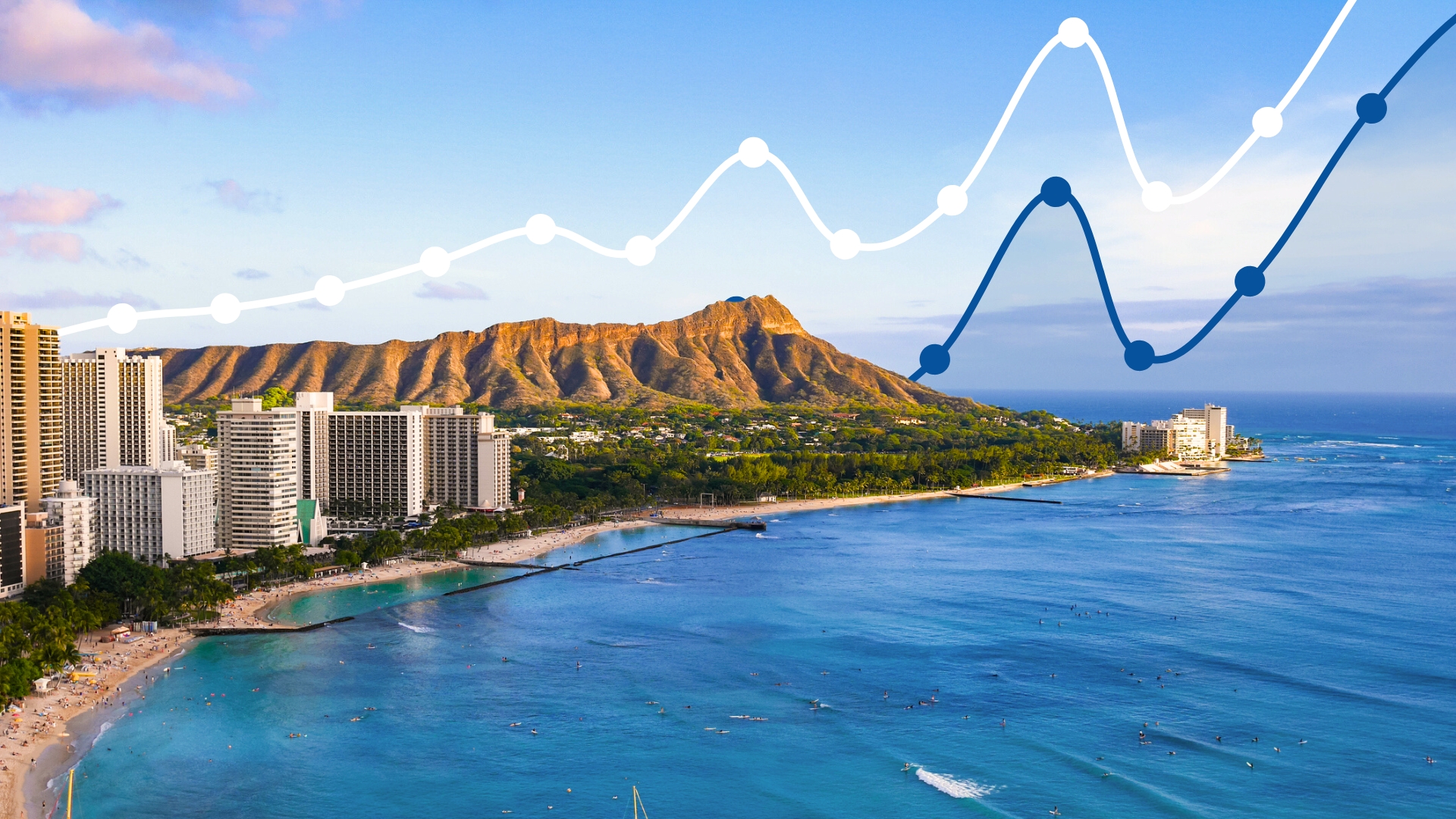The sun-kissed shores of Hawaii attract travelers from across the globe to sink their toes in the golden sands of Waikiki and be serenaded by the enchanting blue waters off the coast of Maui.
But for you, a vacation rental owner in the paradise islands, this alluring backdrop is not just a place of leisure; it’s your canvas for hosting memories and forging experiences that truly capture the spirit of aloha.
The vacation rental industry in Hawaii is highly competitive and requires data-driven insights to succeed. To turn your island oasis into a thriving rental business, you need more than surf-studded landscapes — you need data-driven insights.
In this guide tailored to property owners and investors in Hawaii, we’ll illuminate the path to success by covering essential vacation rental KPIs (key performance indicators and metrics) that every short-term rental owner should know.

Understanding Key Metrics: The Pulse of Your Vacation Rental Business
KPIs, or key performance indicators, are essential tools for assessing the health of your vacation rental business. They provide valuable insights into various aspects of your operations and overall business performance, helping you make informed decisions.
KPIs can help you determine if your business is meeting its expected targets, such as revenue goals and occupancy rates. They also assess the effectiveness of your strategies and processes, like new marketing campaigns or pricing adjustments, and show how your business compares to the competition in your market.
By tracking KPIs, you can identify areas where you need to make changes to improve your business.
Some common KPIs to monitor include:
- Revenue: Measures your total income from bookings and other sources.
- Operations: Assesses the efficiency of your property management, including maintenance and cleaning.
- Marketing: Evaluate the success of your promotional efforts through metrics like listing views and booking rates.
- Guest Experience: Gauges guest satisfaction through reviews and feedback.
For example, you might use the average daily rate (ADR) to track revenue, listing views to assess marketing effectiveness, and guest reviews to understand the guest experience.
By focusing on different KPIs for each area of your business, you can get a comprehensive view of your performance and pinpoint specific areas for improvement. This targeted approach ensures that you can make strategic adjustments to enhance your business’s overall success.
Data-driven decisions are powerful because they offer definitive, quantifiable evidence. This allows you to refine every aspect of your vacation rental business, from pricing strategies to marketing efforts and beyond.
The first step to leveraging KPIs is understanding what they are and why they matter. KPIs are quantifiable measures that gauge the effectiveness of various aspects of your business, from operational efficiency to guest satisfaction.
For a vacation rental, these indicators are the heartbeat of your profitability and the compass for guest-centric excellence.
Occupancy Rate
The occupancy rate is a central indicator for any property manager to measure how often their rental is booked compared to availability. In essence, it shows how well you’re utilizing your property. A successful rental in Hawaii must strike a delicate balance — a high enough occupancy rate to maximize profit, yet with room to breathe to maintain your property’s longevity and guest satisfaction.
Average Daily Rate (ADR)
Your ADR is the average rental income per day within a given group of days. It is a crucial property management KPI for determining pricing strategies and assessing actual revenue against potential earnings. This KPI is intertwined with market demand, seasonality, and your property’s unique value proposition.
Revenue Per Available Night (RevPAR)
RevPAR is a KPI heavily utilized by both hosts and property managers in the hotel industry but equally powerful for vacation rentals. It takes into account ADR and occupancy rate, giving a comprehensive view of revenue potential and actual performance. This makes it an extremely effective metric for optimizing pricing and adjusting availability.
Booking Window
The booking window measures the number of days between the booking date and the check-in date. In an era where spontaneity competes with meticulous planners, understanding lead times can help predict and manage demand more effectively, ensuring a streamlined operation.
Guest Satisfaction Scores
Hawaii is renowned for its warm hospitality, and your guest satisfaction score mirrors that sentiment. Ratings and reviews directly impact your property’s visibility and reputation; therefore, it is essential to track and respond to such feedback with agility and grace. Once you realize that you’re getting a good response, implement dynamic pricing tools to improve your number of bookings and business performance.

How to Measure and Analyze KPIs: A Hawaiian Vacation Rental Owner’s Guide
Tracking vacation rental metrics is more than just number-crunching; it’s a strategic practice that requires the right tools and mindset. As a vacation rental owner, you have a wealth of data at your fingertips, but knowing how to utilize and apply that information effectively takes practice.
Setting Benchmarks and Goals
Before you can improve, you need to know where you stand. Analyzing historical data can help set realistic KPI targets. However, even the most experienced short-term rental investors understand the importance of adaptability. Hawaii’s vacation rental market can change like the tides, especially when accounting for varying travel trends and global events.
Real-Life Examples of KPI Success
Imagine if you knew that implementing dynamic pricing could result in a bump in revenue. Or did you know the best times to market to your guests based on the booking window trends? Real-life examples such as these are the fruits of KPI cultivation and showcase the capabilities that data analysis can yield.
Rate of Occupation
Checking how good your occupation rate is is a great way to understand your vacation rental’s KPI. To figure out how busy your place is, just do this math: divide the number of nights people have booked by the total number of nights you could rent out, then multiply by 100.
It’s smart to see how your place compares to others nearby. If your occupancy rate is much higher than the average, you might be selling yourself short with your prices. If you’ve got properties in different spots, keep in mind that figuring out occupancy rates might vary.
How Long are Guests Staying
The average length of stay of a guest tells you how long each guest stays on average. Just divide the total nights booked by the number of bookings you’ve got.
Keeping an eye on the average length of stay is essential. Loads of short stays can jack up your costs, eating into your profits.
As one expert puts it, while the occupancy rate is the big cheese for cash flow, the average stay length matters, too. Short stays mean more cleaning, which means more expenses. So, when you’re crunching numbers to figure out your bottom line, don’t forget to factor in all the costs.
Look at the Average Daily Rate
By looking at the average daily rate, you’ll know how much moolah you’re raking in per day for each property. It’s handy for sizing up your earning potential, but remember, it doesn’t count all the bills you’ve got to pay.
To figure it out, just divide the total cash you’ve pulled in from bookings for a specific property by the total number of nights booked.
Learn about your Operating Income
Your net operating income is what’s left in your pocket after you’ve paid for everything you need to run your place, such as cleaning, insurance, and so on.
To figure it out, just subtract all those operating costs from the cash you’ve raked in.
By keeping tabs on your net operating income, you get the real lowdown on what you’re shelling out. If you’re seeing a big gap between what’s coming in and what’s left over, it’s probably worth taking a closer look at where your money’s going.
Revenue of Each of Your Properties
If you’re a property manager juggling a bunch of properties, it’s crucial to know which ones are bringing in the most profit. Figuring out the revenue per property gives you the lowdown on which ones are pulling their weight.
Just divide the total rental cash you’re raking in by how many properties you’ve got up for grabs during the time you’re looking at. That’ll give you valuable insights into each property’s earning power.
Total Revenue
Your total revenue represents the full amount you’ve received from all your reservations over a specific period. This figure is crucial because it provides a comprehensive view of your earnings, helping you gauge your potential future profits and financial health.
To calculate your total revenue, you need to sum up all the costs that your guests have paid. For instance, if a guest paid $100 per night for a 3-nights guests stay, a $50 cleaning fee, and $20 in taxes, your total revenue from that reservation would be $370.
By adding up the revenue from all your reservations in the period you’re assessing, you get a clear picture of your overall earnings.
Tools for KPI Tracking and More
From sophisticated property management systems, data providers like Key Data Dashboard or Airdna, and even popular OTAs such as Airbnb and VRBO, technology can assist you with tracking your KPIs.
There are also numerous platforms available to help implement dynamic pricing strategies and aggregate your guest feedback from multiple channels.

How do the Metrics Help Vacation Rentals?
When you think about KPIs, profit might be the first thing that comes to mind. However, tracking vacation rental KPIs provides many benefits beyond just boosting your bottom line.
Make Data-Driven Decisions
By analyzing key performance indicator, you can pinpoint specific areas that need improvement and take targeted actions to address them.
For example, if you notice your cleaning costs are higher than expected, you might switch to a more efficient cleaning service or invest in better training for your staff. These informed decisions can lead to more efficient operations, reduced costs, and a better overall experience for your guests.
Optimize Your Business Operations
Monitoring property management KPIs allows you to identify which processes are time-consuming or costly, helping you make informed decisions about changes or eliminations.
Let’s say you notice that the check-in process at your vacation rental properties is causing delays and guest dissatisfaction. It might be beneficial to invest in self-check-in systems or hire additional staff to manage arrivals.
Implementing these changes can lead to smoother check-ins, happier guests, and improved reviews, ultimately enhancing the overall guest experience and increasing the likelihood of repeat bookings.
By addressing operational bottlenecks, you can ensure your business runs smoothly and remains competitive in the market.
Foster Trust with Homeowners
By consistently tracking and reporting KPIs, you can provide homeowners with clear, transparent insights into the performance of their properties.
Sharing data on revenue and occupancy rates, and guest satisfaction can demonstrate your effective management and commitment to maximizing their investment. This transparency helps build trust, reassuring homeowners that their properties are in good hands and fostering long-term partnerships.
Inspire Your Team
Finally, when your team knows the ultimate goal, they can perform better to improve your business. Tracking KPIs can help identify areas where your team excels and where improvement is needed, providing clear goals and benchmarks.
Celebrating successes when KPIs are met and addressing challenges with targeted strategies can boost morale and drive performance. Recognizing and rewarding your team’s achievements based on these metrics fosters a positive work environment and encourages continuous improvement.
FAQs
How often should I review and adjust my KPIs?
KPIs should be reviewed monthly to quarterly, depending on the size and scale of your operations. Regular review ensures timely adjustments and helps in keeping up with market trends and internal performance goals.
Are there any unique KPIs for vacation rentals in Hawaii?
Yes, Hawaii-specific KPIs might include metrics like the percentage of bookings from international travelers, average length of stay, and the impact of seasonal variations due to weather and local events.
Are there any legal considerations specific to vacation rentals in Hawaii?
Yes, Hawaii has specific regulations regarding short-term rentals, such as registration requirements, zoning laws, and tax obligations. Staying compliant is crucial for maintaining operations.

Get a Free Evaluation for Your Oahu or Maui Vacation Rental
Strategically collecting KPI data is only the first half of the vacation rental equation. The second half is utilizing that data and putting it into action. If you need guidance in understanding your metrics or wonder if your property should be generating more rental income, our team would love the opportunity to assist you.
Our comprehensive full-service vacation rental management program is designed to optimize your property’s performance, maximize revenue, and streamline operations. By leveraging our expertise and cutting-edge technology, you can gain actionable insights into your property’s key performance indicators and stay ahead in the competitive market.
Contact us today for a free rental evaluation and see how our KPI-driven approach can help you achieve your investment goals for your vacation rental property. With our support, you can focus on what matters most — enjoying your vacation property again while we take care of the rest.










